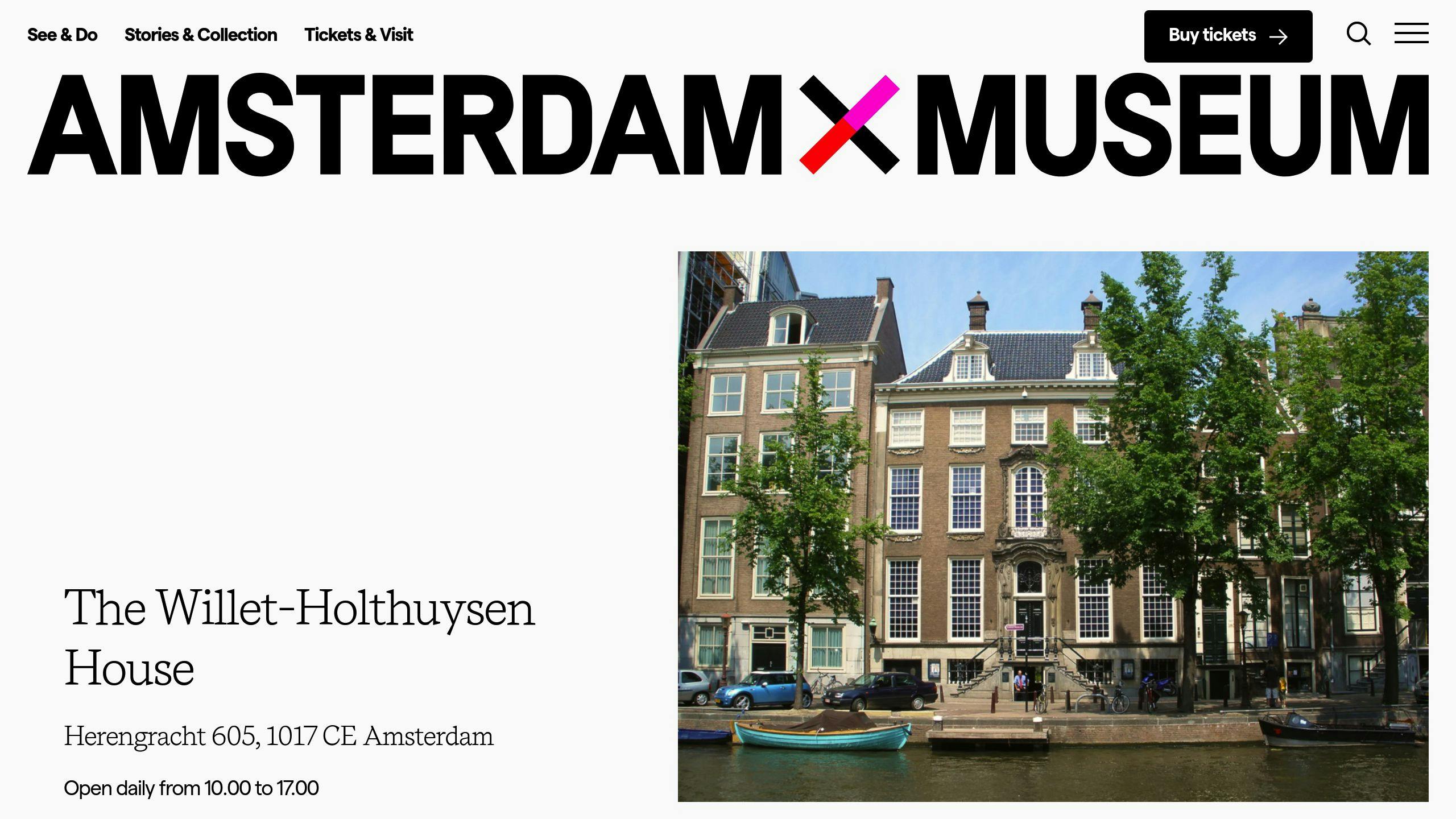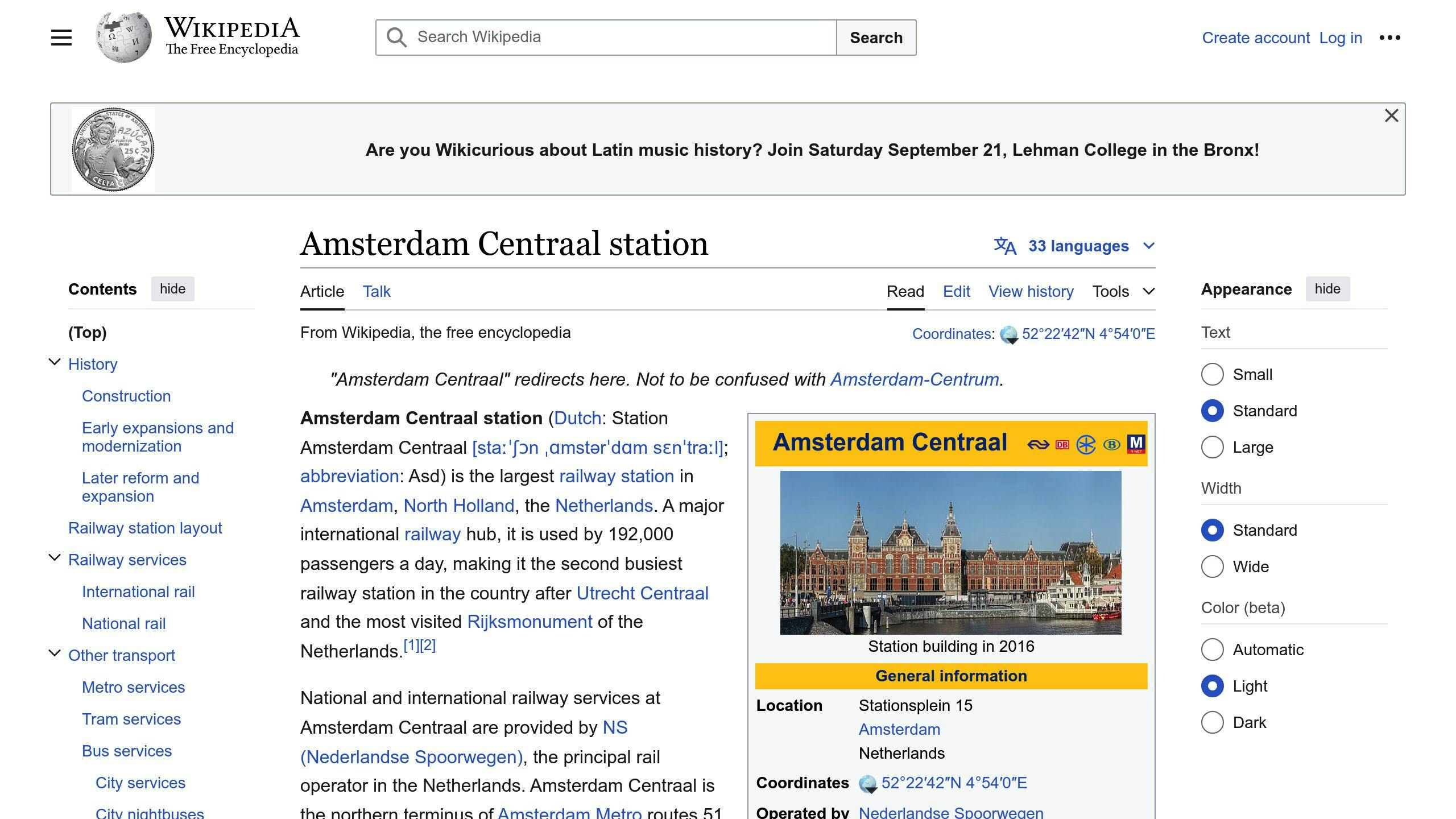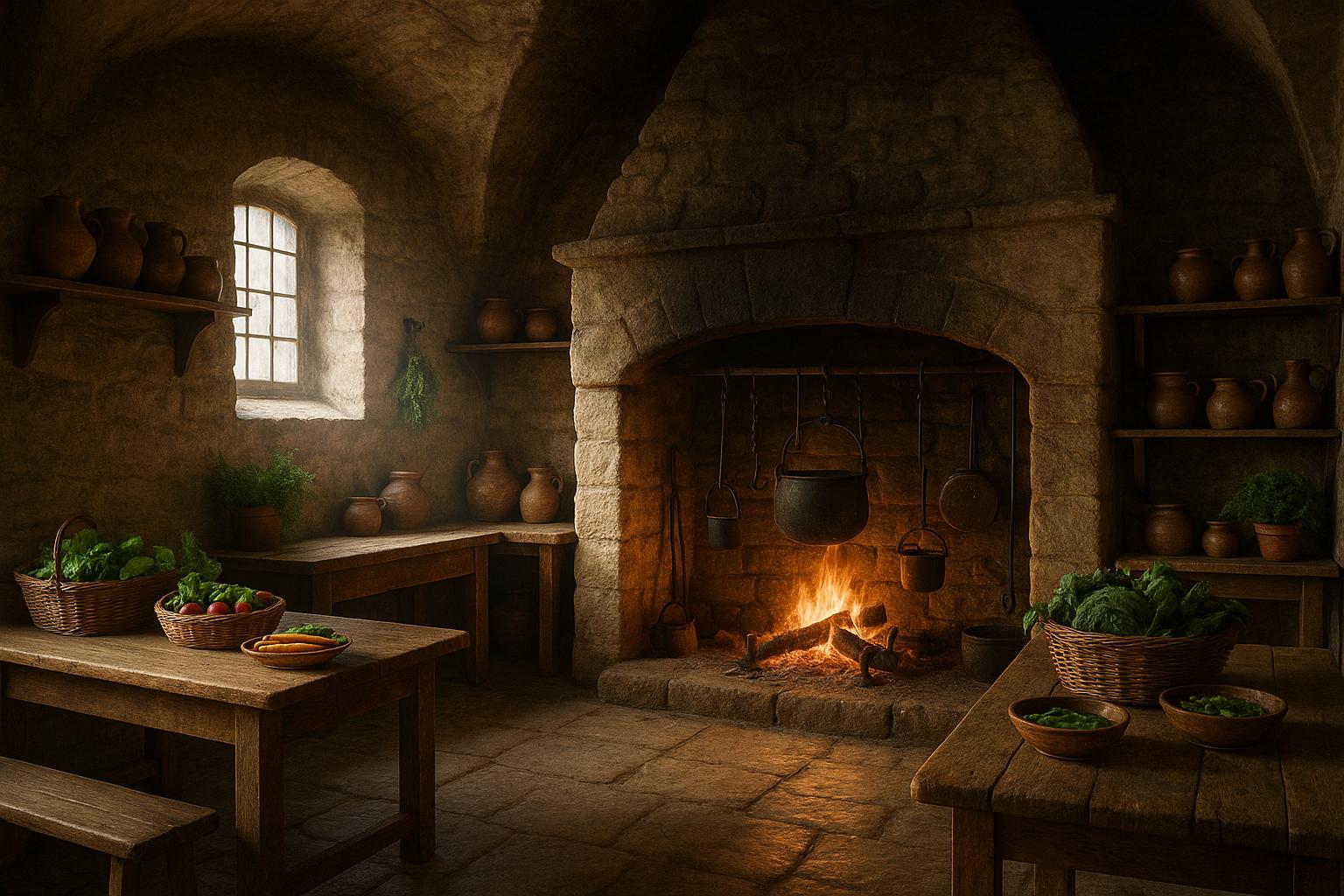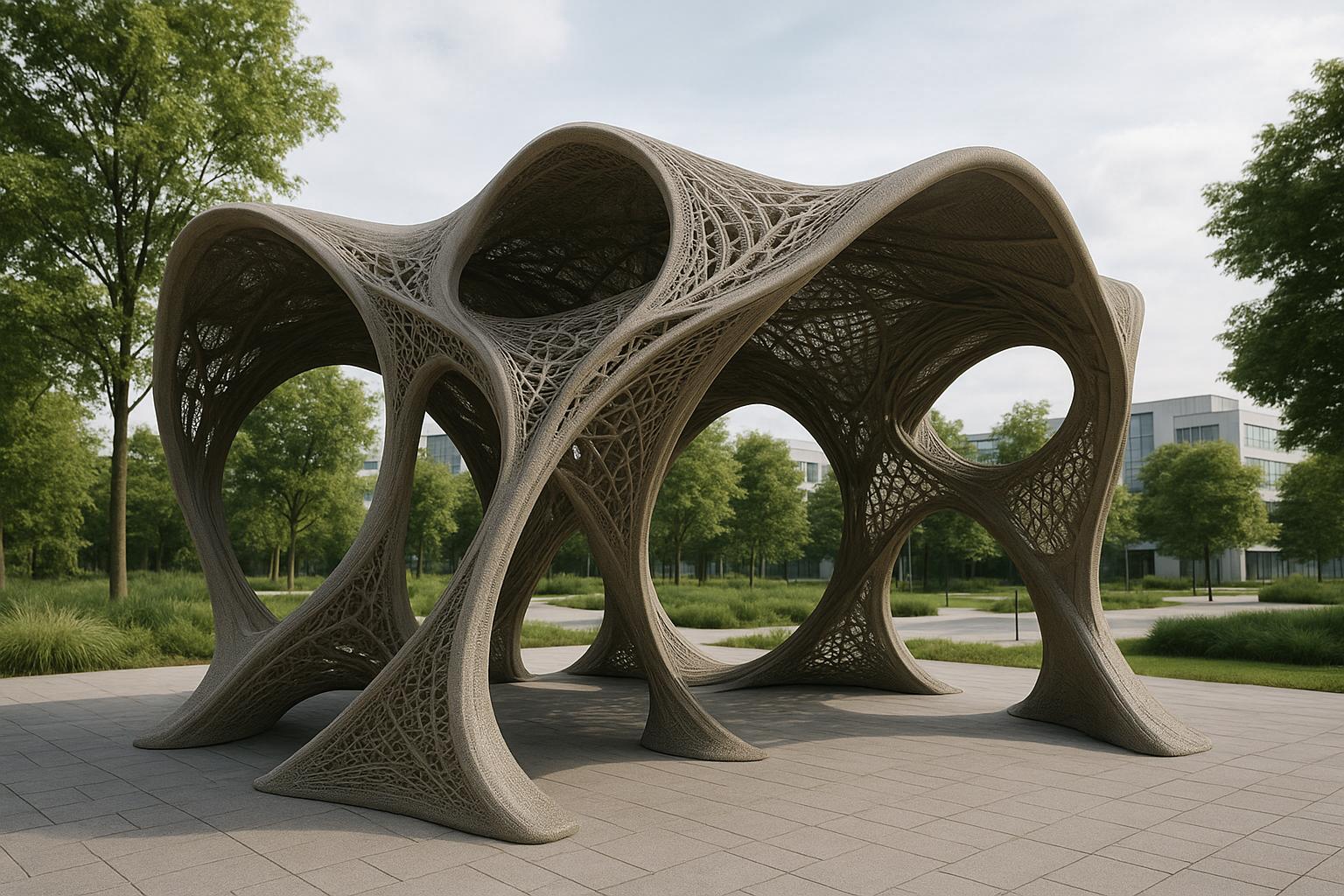Amsterdam's skyline is a captivating blend of historic charm and modern innovation. Here's a quick tour of the city's architectural highlights:
-
Royal Palace: 17th-century grandeur
-
Westerkerk: Tallest church tower in Amsterdam
-
EYE Filmmuseum: Futuristic cinema hub
-
NEMO Science Museum: Ship-shaped science center
-
Het Schip: Amsterdam School masterpiece
-
De Dageraad: Social housing turned architectural gem
-
Museum Willet-Holthuysen: Canal house time capsule
-
Anne Frank House: WWII history preserved
-
Westergasfabriek: Industrial site turned cultural hotspot
-
Heineken Experience: Beer history in a bottle
-
Amsterdam Central Station: Neo-Renaissance transport hub
-
Rijksmuseum: Art and history powerhouse
| Building | Era | Style | Current Use |
|---|---|---|---|
| Royal Palace | 17th century | Dutch Golden Age | Official state palace |
| EYE Filmmuseum | 21st century | Contemporary | Film archive and museum |
| Het Schip | Early 20th century | Amsterdam School | Social housing and museum |
| Rijksmuseum | 19th century | Gothic-Renaissance | National museum |
Amsterdam's buildings tell stories of innovation, resilience, and cultural evolution. From canal houses to modern marvels, each structure adds a unique flavor to the city's architectural tapestry.
Related video from YouTube
Royal Palace of Amsterdam

The Royal Palace of Amsterdam is a big deal. It's smack in the middle of Dam Square and has been around for centuries.
Here's the scoop:
Built in the mid-1600s, this place started as Amsterdam's Town Hall. Why? To show off how rich the city was during the Dutch Golden Age. Fun fact: it's sitting on over 13,000 wooden piles. That's how they dealt with Amsterdam's sandy ground.
But in 1808, things changed. Louis Bonaparte (yep, Napoleon's brother) became King of Holland and turned the Town Hall into his royal pad.
Now, it's a triple threat:
-
King Willem-Alexander's official state palace
-
Spot for fancy state visits and royal parties
-
Tourist attraction you can actually visit
Inside, it's like a history and art buffet. You've got:
-
A marble hall that'll make your jaw drop
-
Fancy Empire furniture
-
Chandeliers and clocks that'll make you go "wow"
-
Paintings from the royal family
Thinking about checking it out?
| What | Details |
|---|---|
| Cost | €12.50 |
| Perks | Audio guide included |
| Access | Wheelchair-friendly |
| Heads up | Closed for royal stuff sometimes |
This place has seen some things. In 1980, Queen Beatrix got her crown here. Her mom, Juliana, introduced her to the people right from this spot.
Bottom line: If you're into Dutch history or cool buildings, you've gotta see the Royal Palace of Amsterdam. It's been a city hall, a king's house, and now it's open for you to explore. Pretty neat, huh?
2. Westerkerk

The Westerkerk is a big deal in Amsterdam. Built in the 1620s, it's a classic example of Dutch Renaissance architecture.
Here's the lowdown:
-
It's smack in the middle of Amsterdam at Prinsengracht 281
-
The church is 58 meters long and 29 meters wide
-
Its tower, the Westertoren, is the tallest church tower in Amsterdam at 87 meters
The Westerkerk has some serious history:
It was one of the first churches built specifically for Protestants after the 1578 Reformation. Rembrandt's buried here, and Anne Frank wrote about hearing its clock chimes during World War II.
Inside, you'll see:
-
Wooden vaults
-
Fancy woodwork
-
Stained glass windows
-
A main pipe organ from 1681 with paintings by Gerard de Lairesse
Some cool facts:
-
Princess Beatrix got married here in 1966
-
Every Tuesday at noon, students play the carillon bells
Want to visit? Here's what you need to know:
| What | When |
|---|---|
| Open | 10am-3pm, Mon-Fri |
| Weekends | 10am-3pm, Sat (Apr-Nov) |
| Tower | Apr-Oct only |
| Services | Sundays, 10:30am |
The Anne Frank House is right nearby.
Pro tip: Climb to the first balcony of the Westertoren for a great view of the Jordaan area. But remember, it's only open from April to October.
The Westerkerk isn't just a pretty building - it's a living piece of Amsterdam's history. Whether you're into old buildings, history, or just want to see a famous Amsterdam spot, it's worth checking out.
3. EYE Filmmuseum

Imagine a building that looks like it's in motion, even when it's standing still. That's the EYE Filmmuseum in Amsterdam. Queen Beatrix II opened this futuristic structure in 2012, and it's been turning heads ever since.
The architects went all out with this one. The building's smooth, shiny surfaces play tricks on your eyes, changing appearance as the day goes on. But it's not just a pretty face - this place is serious about film.
Here's what you'll find inside:
-
A massive film archive
-
A museum packed with movie history
-
Four cinemas for your viewing pleasure
Let's break it down:
| Feature | What's Inside |
|---|---|
| Location | Amsterdam's Overhoeks area |
| Film collection | 57,000 titles |
| Digital storage | 2.5 petabytes (that's a LOT) |
| Cinemas | 4 (sizes vary from cozy to crowd-pleasing) |
| Exhibition spaces | 2 galleries |
| Total size | 8,700 square meters |
The EYE's collection is mind-boggling:
-
210,000 film cans
-
82,000 movie posters
-
700,000 photos
-
Tons of books, journals, and old-school film gear
One gallery takes you on a trip through film history, showing off vintage equipment and 100 clips from their archive. The other gallery? It's all about pushing boundaries with experimental cinema.
But wait, there's more:
-
Rotating exhibitions (4 per year)
-
Film screenings galore
-
Tours, workshops, and special events
-
A "Playground" for kids (and kids at heart)
They've thought of everything here. The building's fully accessible, there's a library for deep dives, and you can grab a bite with a view at the café-restaurant.
The EYE isn't just about movies - it's helping to reshape Amsterdam. It connects the old city with new developments, complete with underground parking and riverside paths.
Want to catch the latest Dutch flick or a classic masterpiece? This is THE spot. The EYE Filmmuseum has quickly become the Netherlands' go-to place for all things cinema.
4. NEMO Science Museum

NEMO Science Museum is a standout in Amsterdam's skyline. It looks like a giant green ship docked in the harbor. Italian architect Renzo Piano designed this eye-catching building.
What makes NEMO special?
| Feature | Description |
|---|---|
| Location | On top of the IJ Tunnel entrance |
| Design | Boat-shaped with a slanted roof |
| Exterior | Copper-green panels with a patina |
| Size | Biggest science center in the Netherlands |
| Floors | 4 levels of hands-on exhibits |
The building's design is clever:
1. It's a landmark you can't miss.
2. The slanted roof is a public square with great views of Amsterdam.
3. Inside, the layout gets you excited to learn.
NEMO isn't just about looks. Inside, you can:
-
Do experiments in a chemistry lab
-
Make videos and music in the Media Lab
-
Play with cutting-edge tech
Renzo Piano, the architect, said:
"Amsterdam is a one-dimensional city that lacks a piazza or a high point from which the city could be viewed."
His design fixes this by adding a high-up public space on the roof.
NEMO stands for "new and entertaining museum of science and technology." It lives up to its name with:
-
Theatre shows
-
Films
-
Workshops
-
Hands-on demos
Want more? Check out 'The Studio' at Marineterrein. It's an off-site spot where NEMO creates new exhibits about important social issues.
NEMO isn't just a building. It's a bridge between Amsterdam's sea-faring past and its tech-driven future. It invites you to explore, learn, and see the city in a whole new way.
5. Het Schip

Het Schip ("The Ship") is an eye-catching apartment complex in Amsterdam's Spaarndammerbuurt. Built from 1919 to 1921, it's a standout example of Amsterdam School architecture.
| Feature | Description |
|---|---|
| Design | Wave-like structure, expressionist style |
| Architect | Michel de Klerk |
| Built for | Eigen Haard (socialist housing association) |
| Original purpose | Worker housing |
| Current use | Social housing and museum |
What makes Het Schip special? Think bright orange-brown bricks, quirky sculptures, and a shape that looks like a ship. It's not just pretty - it was built with a purpose.
Originally, Het Schip had 102 apartments, a post office, a meeting hall, and a school. But it wasn't just about putting roofs over heads. The goal? Better living for Amsterdam's workers.
How? By giving them:
-
Roomy living spaces
-
Separate kitchens and bedrooms
-
Actual flushing toilets
-
Lots of natural light
Fast forward to today. Het Schip still serves the community, but with a twist. The old school and post office? They're now Museum Het Schip, all about the Amsterdam School style. In 2014, nearly 20,000 people checked it out.
At the museum, you can:
-
Learn about Amsterdam School architecture
-
Step into a 1920s apartment
-
See what a slum dwelling was like
Het Schip isn't just a building. It's a symbol of progress and innovation in Amsterdam. Pretty cool for a bunch of bricks, right?
6. De Dageraad

De Dageraad, or "The Dawn" in Dutch, is a knockout housing complex in Amsterdam. Built from 1919 to 1922, it's a poster child for the Amsterdam School style.
Here's the lowdown:
-
Architects: Michel de Klerk and Piet L. Kramer
-
Built for: Socialist housing association De Dageraad
-
Style: Amsterdam School
This beauty was part of H.P. Berlage's Plan Zuid, a fresh take on city planning. De Dageraad wasn't just about looks - it aimed to make life better for the working class:
-
Mostly three- and four-room units
-
No more than four floors
-
Staircases with fresh air access
-
Roofline recesses for extra space
De Klerk tackled the housing at Th. Schwartzeplein and H. Ronnerplein. Kramer handled Burg. Tellegenstraat, W. Passtoorsstraat, and Talmastraat.
| Architect | Design Area | Cool Features |
|---|---|---|
| Michel de Klerk | Th. Schwartzeplein, H. Ronnerplein | Cleaner, less busy design |
| Piet L. Kramer | Burg. Tellegenstraat, W. Passtoorsstraat, Talmastraat | Wavy vertical planes on P.L. Takstraat corner |
The project stirred up some drama. Socialist alderman Wibaut got flak for the fancy facades. But guess what? Those expressive facades and beautiful ornaments have stood the test of time.
Today, De Dageraad is still going strong. There's even a museum that dishes out info about its history and architects. It's a great jumping-off point for neighborhood tours.
"The dwellings are assembled in groups separated by deep recesses in the roofline." - Jan Derwig, Architecture Guide
De Dageraad is living proof of its creators' vision and Amsterdam's early 20th-century social housing push. It's where function meets art in city design.
sbb-itb-1be9014
7. Museum Willet-Holthuysen

Ever wondered what it was like to live in Amsterdam's Golden Age? The Museum Willet-Holthuysen is your ticket to that world.
This grand canal house, built in 1687, is a time capsule of 18th and 19th-century Amsterdam. It's not just a building - it's a slice of Dutch history frozen in time.
Here's the scoop:
-
It's on the Herengracht, part of Amsterdam's UNESCO World Heritage Canal Ring
-
The house got a fancy makeover in 1739, showing off the trendy Louis XIV style
-
It houses one of the Netherlands' first private art collections
The museum spans three floors:
| Floor | What You'll See |
|---|---|
| Souterrain | Kitchen and French-style garden |
| First Floor | Ballroom, library, dining room, salons |
| Top Floor | Exhibition rooms |
Art lovers, you're in for a treat. The museum's collection includes flower paintings by Amsterdam artists and decorative works by Jacob de Wit.
History buffs, don't miss the period rooms. They're decked out in the rich colors and styles that Amsterdam's wealthy merchants loved.
Planning your visit? Here's what you need to know:
-
Open daily: 10 am to 5 pm (11 am on weekends)
-
Closed: Christmas Day, New Year's Day, King's Day (April 27)
-
Tickets: €12.50 for adults, free for kids up to 17
-
Want a guide? Book 2 weeks ahead for €70 per group
"The house passed through many owners over the centuries until Abraham Willet and his wife, Lousa Holthuysen, bought it in 1861." - Rachel Heller, Travel Blogger
Heads up: The museum has lots of stairs, so it's not wheelchair-friendly. But they're working on it.
So, ready to step back in time and live like Amsterdam's elite? The Museum Willet-Holthuysen is waiting for you.
8. Anne Frank House

The Anne Frank House in Amsterdam isn't just a building. It's a time capsule.
At Prinsengracht 263-267, this ordinary-looking house hides an extraordinary story. For two years during World War II, it sheltered eight people behind a bookcase. One of them was Anne Frank, whose diary became a global phenomenon.
Since opening as a museum in 1960, it's become an Amsterdam must-see. In 2019, 1.3 million people walked through its doors.
What's inside?
-
The Secret Annex: Frozen in time
-
Anne's actual diary
-
Personal belongings of the hidden
-
Exhibits about the Franks and the Holocaust
Planning your visit:
-
Book online (no walk-ins)
-
Set aside 1-2 hours
-
No photos allowed
-
Audio guide in 9 languages
| Who | Ticket Price |
|---|---|
| Adults | €16 |
| 10-17 years | €7 |
| Under 10 | €1 |
Otto Frank, Anne's father, said:
"To build up a future, you have to know the past."
The Anne Frank House isn't just famous. It's a lesson for the future, written in the past.
9. Westergasfabriek

The Westergasfabriek is a prime example of Amsterdam's ability to transform industrial spaces into cultural hubs. Built in 1885 as the Netherlands' largest gas extraction plant, it's now a thriving center for creativity and leisure.
Here's a quick rundown of its evolution:
-
1885: Gas factory opens
-
1967: Gas production stops
-
1989: Buildings become national monuments
-
2003: Reopens as "Culture Park Westergasfabriek"
Today, 19 original buildings designed in the Dutch Neo Renaissance style stand as national monuments. But what goes on inside these historic walls now?
| Activity | What You'll Find |
|---|---|
| Events | 6 major festivals yearly |
| Shopping | Repurposed buildings house various shops |
| Food & Drink | Bars and restaurants |
| Culture | Cinema and exhibits |
| Outdoor Activities | Surrounded by Westerpark with open spaces |
The transformation from polluted industrial site to urban hotspot wasn't easy. In the 1980s, Amsterdam began reimagining the space. American landscape architect Kathryn Gustafson and Francine Houben of Mecanoo designed the surrounding Westerpark, blending industrial heritage with modern leisure.
Whether you're into history, festivals, or just want a cool place to hang out, the Westergasfabriek has you covered. It's where Amsterdam's past meets its present, creating a unique space for locals and visitors alike.
10. Heineken Experience

Ever wondered what it's like to step inside a beer bottle? The Heineken Experience in Amsterdam's De Pijp neighborhood comes pretty close.
This former brewery, built in 1867, was Heineken's main brewing site until 1988. In 1991, it opened to the public, and after a recent facelift in 2022, it's better than ever.
Here's what you'll find across four floors of beer-soaked fun:
| What's Inside | What You'll Do |
|---|---|
| Brewing Process | Ride the 'Brew U' and feel like a beer droplet |
| Heineken History | Dive into the family's story and brand evolution |
| Beer Tasting | Sip on two free beers (because why not?) |
| Souvenir Shop | Create your own Heineken bottle or glass |
Want more? Upgrade to the VIP tour for extra perks like exclusive access, five beer tastings, and a personalized bottle.
"An hour of semi-educational fun and drinking. Learn about the Heineken family business and enjoy some activities along the way." - Robert P, Sydney, Australia
Pro tip: Book online in advance. No tickets at the door!
Bonus for history buffs: The Heineken Experience is part of the European Route of Industrial Heritage, linking 845 sites across 29 countries.
11. Amsterdam Central Station

Amsterdam Central Station is the city's main transport hub. It handles over 250,000 travelers daily. Opened in 1889, this Neo-Renaissance building was designed by Pierre Cuypers.
The station sits on three artificial islands. It has 15 tracks and 11 platforms, with the longest stretching 695 meters. It's not just for trains - you'll find metro lines, trams, buses, and ferries here too.
Here's what you need to know:
| Feature | Count |
|---|---|
| Daily passengers | 250,000 |
| Tracks | 15 |
| Platforms | 11 |
The station offers more than just transport. You'll find ATMs, luggage storage, a tourist office, currency exchange, shops, and restaurants.
"The central station turned Amsterdam from a waterfront city to an inland city." - Geert Mak, Historian
If you're traveling:
-
Get there 15 minutes early
-
For short stays, buy a single-trip ticket
-
It's open 24/7, but rush hours are busy
Amsterdam Central Station isn't just a transport hub. It's the most visited national heritage site in the Netherlands. Whether you're catching a train or admiring the architecture, it's worth a visit.
12. Rijksmuseum

The Rijksmuseum is Amsterdam's art and history powerhouse. Built in 1885, it's a Gothic-Renaissance mashup designed by Pierre Cuypers.
This national treasure's story kicked off in 1798 when the Dutch government said, "Hey, let's make a museum!" It found its forever home in 1885, showing off Amsterdam's old-school paintings.
Fast forward to 2013. After a 10-year makeover, the Rijksmuseum reopened with a bang:
| Renovation Rundown | The Scoop |
|---|---|
| Price Tag | 375 million euros |
| Mastermind | Cruz y Ortiz arquitectos |
| New Goodies | Fancy entrance, Asian wing, spruced-up garden |
| Art on Display | 8,000 pieces across 80 rooms |
They kept Cuypers' OG design but added some modern flair. The showstopper? A massive 2,250 square-meter Atrium, created by linking two courtyards underground.
The Rijksmuseum's collection? It's 800 years of Dutch art and history in one place. We're talking heavy hitters like Rembrandt's "The Night Watch" and Vermeer's "The Milkmaid."
Pro tips for visitors:
-
Snag tickets early (they sell out!)
-
Give yourself an hour for the Gallery of Honor
-
Maybe grab a guide for the inside scoop
Open every single day of the year, it's always ready for art lovers and curious cats. The Rijksmuseum isn't just a museum - it's Amsterdam's cultural heart.
Summary
Amsterdam's skyline is a mix of old and new. The city's buildings tell a story that spans centuries.
Here's a quick look at Amsterdam's architectural timeline:
| Era | Features | Examples |
|---|---|---|
| 17th Century | Canal houses | Royal Palace Amsterdam |
| Early 20th Century | Amsterdam School | Het Schip |
| Mid-20th Century | Functionalism | Rietveld's concrete buildings |
| Late 20th Century | Modern design | NEMO Science Center |
| 21st Century | Contemporary | EYE Film Museum |
Amsterdam's architects are pros at mixing old and new. The Cuyperspassage is a perfect example. This bike and pedestrian tunnel has 46,000 wall tiles inspired by the Rijksmuseum.
The city gets creative with space. The NEMO Science Museum sits on top of an old transport tunnel. It's a cool way to reuse space.
Old buildings get new life too. The Conservatorium Hotel used to be a music school. Now it's a fancy hotel. The Student Hotel in the city center? It was once a newspaper printing place.
Amsterdam keeps changing. The A'DAM Tower, built in 1971, now has bars, restaurants, and a rooftop deck with amazing views.
Want to see more? Take a guided tour. You'll learn about the city's building history and see how old and new come together.
FAQs
What is the most famous landmark in Amsterdam?
The Rijksmuseum takes the crown as Amsterdam's most famous landmark. It's not just a museum - it's a cultural powerhouse.
Here's what you need to know:
-
It's at Museumstraat 1, 1071 XX Amsterdam
-
Open daily, 9 am to 5 pm
-
Houses over 900,000 artifacts
But Amsterdam's not a one-hit wonder. Check out these other stunners:
| Building | Claim to Fame |
|---|---|
| Royal Palace | King's pad, 17th-century bling |
| NEMO Science Museum | Looks like a ship, makes science fun |
| Anne Frank House | WWII history, up close and personal |
| Westerkerk | Tallest church tower in town |
Pro tip: Start with the Rijksmuseum, then hit these other spots. Each one's got a story to tell about Amsterdam's past and present.


